Coloring With Emotions, Color Psychology In Coloring Books
Coloring with emotions is using the choice of colors to evoke specific feelings and moods. How people choose a color to fill in their design is often based on a feeling or emotion at the time.
Coloring With Emotions:
Color Associations and Meanings:
Different colors are often associated with certain emotions or concepts. When coloring with emotions, individuals may instinctively choose colors that align with the emotions or themes they want to convey in the artwork.
Colors are often associated with certain meanings and emotions, here are some examples.
What are primary colors?
Primary colors are fundamental colors of red, blue, and yellow that serve as the basis for creating all other colors in the color wheel through various combinations.
Red:
- Association -Red is often linked to feelings of passion, love, energy, and excitement. It is an attention color that creates a sense of urgency.
- Meaning – Red positive and intense color which can represent anger, determination, and power. However red also symbolizes love and romance.
Blue:
- Association– When one thinks of blue they often associate it with the ocean or the sky. Blue represents calm, tranquility, and stability.
- Meaning – A darker blue may be a sign of wisdom and intelligence for those of authority and professionalism. It often has a meaning of can represent peace, serenity, and loyalty.
Yellow:
- Association – Yellow has uplifting, cheerful qualities linked to the sun with its brightness, warmth, and positive vibes.
- Meaning – This color can also convey a sense of energy and enthusiasm symbolizing happiness, optimism, and enthusiasm.
Secondary Colors:
By mixing primary colors in different combinations, you can create secondary colors (orange, green, and purple) and a wide spectrum of intermediate colors.
Green:
Green is a color that holds a variety of meanings and associations, as with other colors the significants can vary based on cultural, historical, and individual contexts.
The color green may represent as follows:
- Nature and Growth
- Balance and Harmony
- Health and Wellness
- Renewal and Rejuvenation
- Money and Wealth
- Environmental Awareness
- Jealousy and Envy
Orange:
Orange is a vibrant and energetic color, Some common interpretations are:
- Energy and Enthusiasm
- Creativity and Expression
- Vitality and Vibrancy
- Optimism and Positivity
- Warmth and Comfort
- Adventure and Exploration
- Confidence and courage
Purple:
Purple is a color often associated with mystery, spirituality, and regal qualities.
- Royalty and Luxury
Pink:
- Love and Romance
- Femininity
- Youthfulness
- Care and Compassion
- Calm and Soothing
- Friendship
- Positivity and Hope
- Playful
- Unconventional and Gender Expression
Black:
Black holds a range of meanings and interpretations as well across different cultures, contexts, and symbolism.
- Mystery and Elegance
- Depth and Power
- Absence and Void
- Simplicity and Minimalism
- Formality and Elegance
- Revolution and Rebellion
- Grief and Mourning
- Strength and Protection
- Mysticism
What are warm colors?
Warm colors are a group of colors that are associated with warmth, energy, and a sense of comfort. They are typically found on the red, orange, and yellow sides of the color wheel.
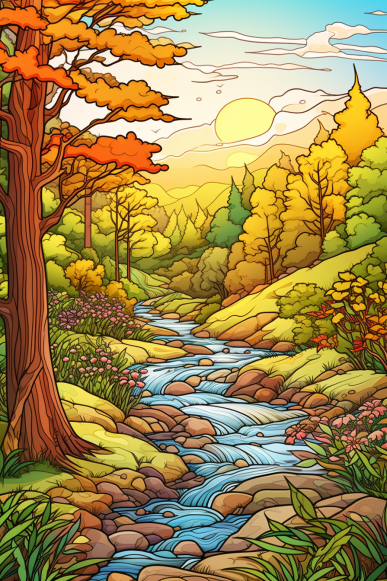
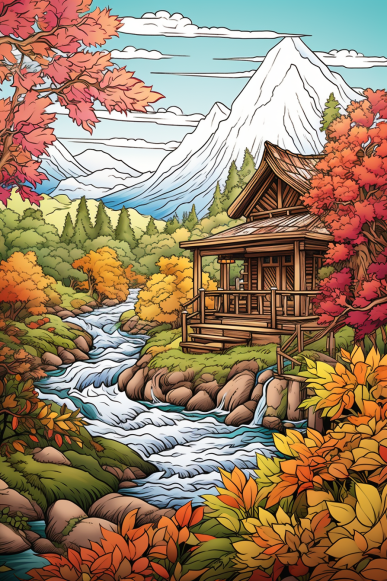
What are cool colors?
Cool colors are a group of colors that are associated with calmness, tranquility, and a sense of coolness or coldness. They are typically found on the green, blue, and purple sides of the color wheel.
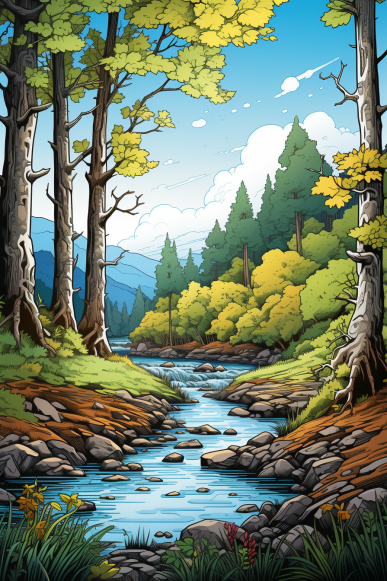
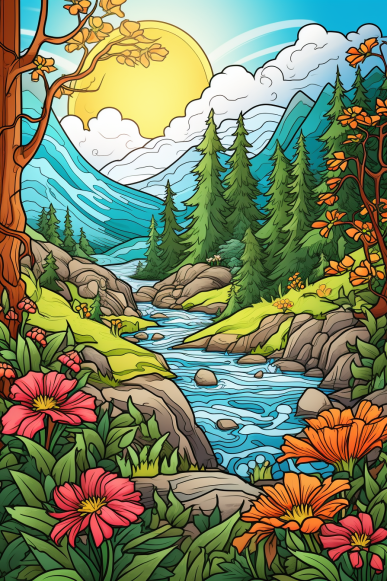
What are the colors called between the cool and warm colors?
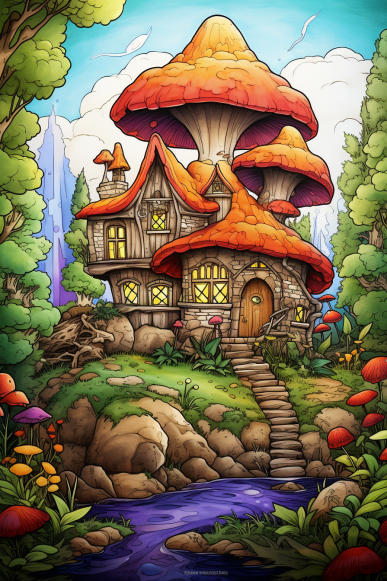
The colors in the middle of the color wheel, often referred to as “intermediate” or “intermediate-temperature” colors, fall between the cool and warm colors. They are created by mixing equal parts of a primary cool color and a primary warm color. The primary cool colors are blue, green, and purple, while the primary warm colors are red, orange, and yellow.
- Blue-Green (Teal or Turquoise): This color is a mixture of blue and green.
- Yellow-Green (Chartreuse or Lime Green): Yellow-green is a combination of yellow and green.
- Yellow-Orange (Amber or Gold): Yellow-orange is created by mixing yellow and orange.
- Red-Orange (Vermilion or Coral): Red-orange results from mixing red and orange.
- Purple-Blue (Indigo or Violet): Purple-blue is a blend of purple and blue.
Why do people love coloring outdoor landscapes?
People often enjoy coloring outdoor landscapes including Wildlife for several reasons, relaxation, creativity, and a connection to nature.
- Relaxation and Stress Relief: Coloring, in general, is known to have calming and stress-reducing effects. When coloring outdoor scenes, individuals can immerse themselves in the tranquility of nature, which can provide a sense of relaxation and escape from the stresses of daily life.
- Creative Expression: Coloring allows for creative expression without the pressure of starting from a blank canvas. It allows people to explore their artistic side, experiment with colors, and make choices that reflect their personal style and preferences.
- Appreciation of Nature: Coloring outdoor landscapes can enhance a person’s appreciation of the natural world. It allows individuals to focus on the details of a landscape, from trees and flowers to mountains and bodies of water, and the wildlife which can foster a deeper connection to nature.
- Mindfulness and Mindful Coloring: Coloring can be a form of mindfulness, where individuals engage fully in the present moment, concentrating on the act of coloring and the colors they choose. This can promote a sense of mindfulness and awareness.
- Escape and Adventure: Coloring outdoor scenes can transport people to different places and provide a sense of adventure and exploration. It allows them to create and customize their own outdoor worlds.
- Nostalgia: For many people, coloring outdoor landscapes can evoke memories of childhood when they colored in coloring books filled with scenes from nature. This sense of nostalgia can add to the enjoyment of the activity.
- Therapeutic Benefits: Coloring is sometimes used as a therapeutic tool. Coloring outdoor landscapes can be especially helpful for those who may have difficulty accessing natural settings due to physical limitations or other constraints. It can offer a form of therapeutic escapism.
- Social and Recreational Activity: Coloring outdoor landscapes can be a social activity as well. People may gather to color together, share their work, and engage in discussions about the scenes they are coloring.
- Artistic Exploration: Some individuals use coloring outdoor landscapes as a way to practice and improve their artistic skills, including blending colors, shading, and texture.
- Personalization: Coloring outdoor landscapes allows for personalization and interpretation. Individuals can choose the colors they feel best represent a scene, which can result in a unique and meaningful artwork.

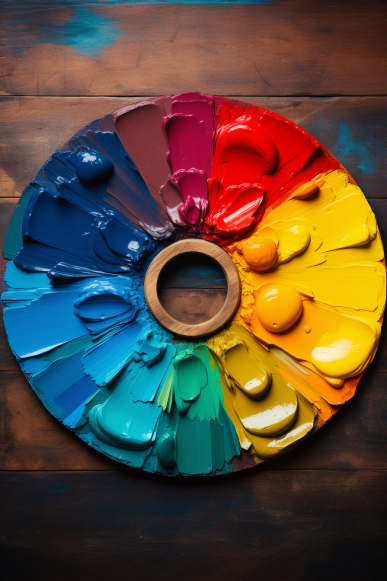
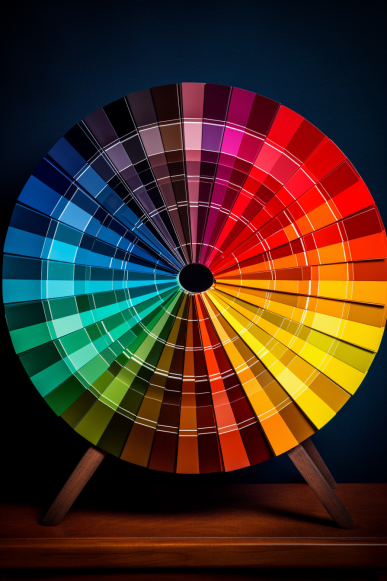
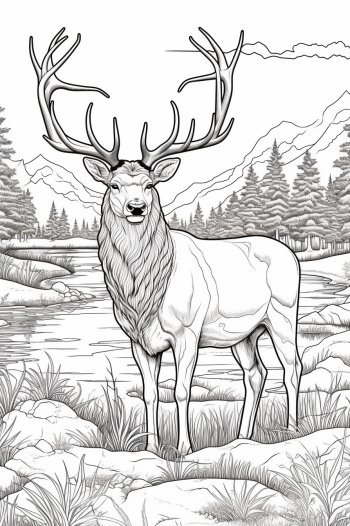




This was a really interesting read. I know art therapy can be very useful for our mental health.
I love to color! I think it’s so relaxing. I am so glad someone came up with adult coloring books. I love learning what all the colors represent.
I am definitely a woman of mystery and see myself as strong. Maybe that’s why I have so much black in my wardrobe?
I love coloring nature scenes because they lessen my anxiety and makes me feel more relaxed.